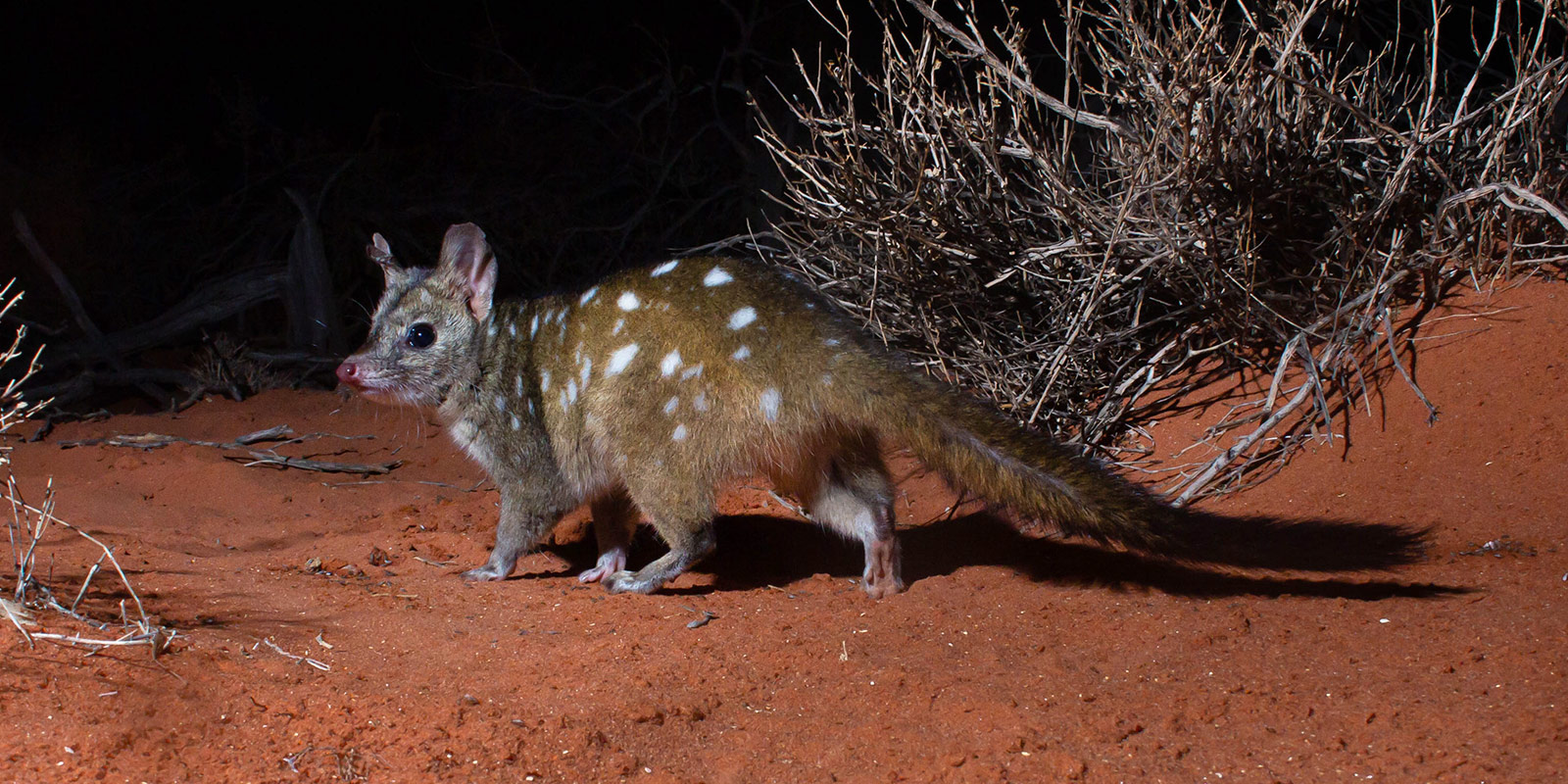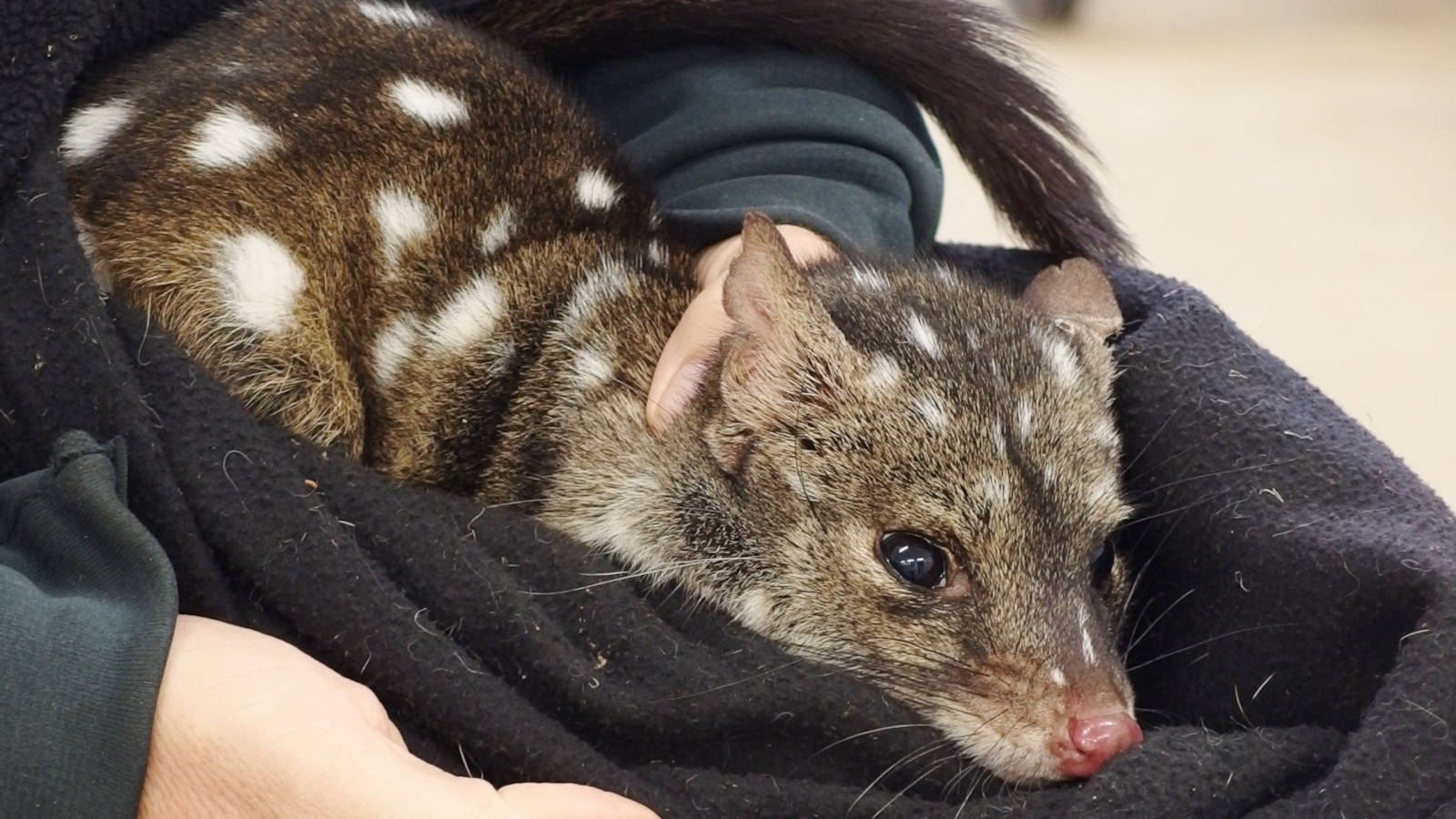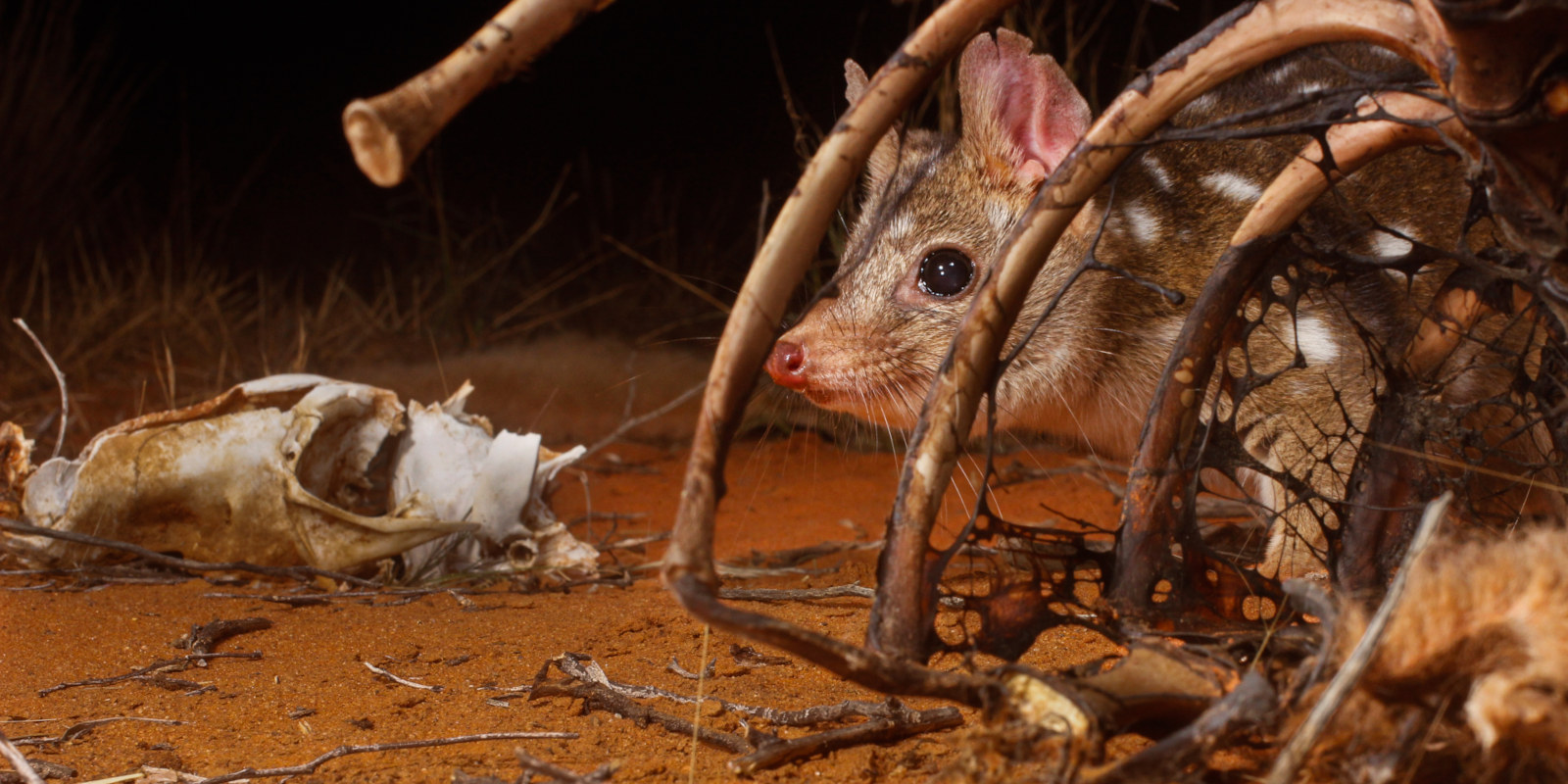Western Quoll
Western quolls are a feisty marsupial predator. Their addition to Arid Recovery has helped achieve a balanced ecosystem

The western quoll is Arid Recovery's first mammalian predator reintroduction. Since 2018, these quolls have flourished within the desert ecosystem
In 2015/16 Arid Recovery trialled a reintroduction of the western quoll (Dasyurus geoffroii) to test if the species was suited to life at Arid Recovery. The reintroduction was a success, with two female and two male western quolls establishing territories and breeding. After two years of trials and research, 12 western quolls were reintroduced to the reserve.
WHAT HAS ARID RECOVERY LEARNT?
Genetic testing of western quolls reveals that they are sneaky lovers
In May 2018, Arid Recovery reintroduced twelve western quolls. By July, these quolls successfully bred, resulting in thirty offspring from five females. To determine parentage, DNA analysis was conducted on tissue samples collected from all twelve reintroduced quolls and twenty-three offspring.
We found that fifteen of the twenty-three offspring were fathered by a single male, Coorlay, indicating a notable paternity bias. Further analysis suggested that despite being the smallest male, Coorlay's large testes and extensive home range likely contributed to his reproductive success.
Additionally, one litter displayed multiple paternity. Where offspring from the same litter can be fathered by different males – in this case, three offspring were fathered by one male, and one offspring was from a different male.
As a result of this study, we regularly introduce quolls from external populations into the Arid Recovery population to enhance genetic variability.
 Despite Coorlays small size, he fathered 15 of the 23 offspring in the study
Despite Coorlays small size, he fathered 15 of the 23 offspring in the study
SPECIES PROFILE
Range and abundance: The western quoll once inhabited over 70% of the continent. Its range extended from western Queensland and New South Wales across central Australia to the Western Australia coastline. Following European settlement, the western quoll disappeared from most of its former range and is now only found naturally in the jarrah forests, woodlands and mallee shrublands of south-western Western Australia.
Behaviour: Males and females only come together to mate. They have large home ranges to find suitable shelter and sufficient prey. In Western Australia, female home ranges are 55-120 ha and are vigorously defended. Males’ home ranges are even larger and usually overlap with both male and female home ranges.
Shelter: Western quolls shelter in hollow logs or burrows. Western quolls at Arid Recovery mostly shelter in bettong warrens and single entrance burrows.
Feeding: Western quolls feed on a range of prey including large invertebrates, reptiles, mammals and birds. They kill larger prey with a bite to the back of the head. They primarily forage on the ground, but can also climb trees to find prey.
Breeding: Western quolls can give birth to up to six young. The young are kept in the mother’s pouch until between two to three months of age. The mother then leaves the young in the den while she goes out to feed. The young are weaned at about five to six months and are fully mature at one year.
Western quolls are highly promiscuous. Females may mate with several males during a breeding season, and males cover a lot of ground. Research at Arid Recovery has confirmed multiple paternity in the species, where individual baby quolls from the same litter can have different fathers.
Threats: The decline of the western quoll was caused by factors including habitat modification through altered fire regimes and land clearing. Feral cats and foxes have also contributed to the western quoll’s decline. Additionally, western quolls are likely to be in direct competition with feral cats and foxes for the same food resources. The western quoll currently only occupies 2% of its former range and is now listed nationally as vulnerable.
